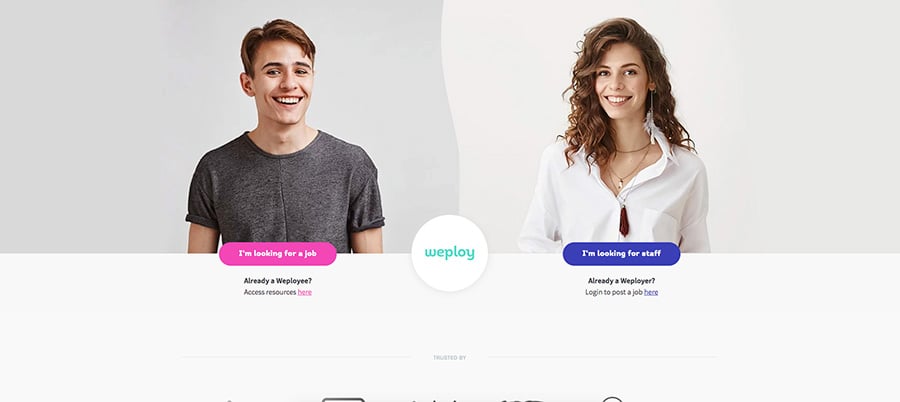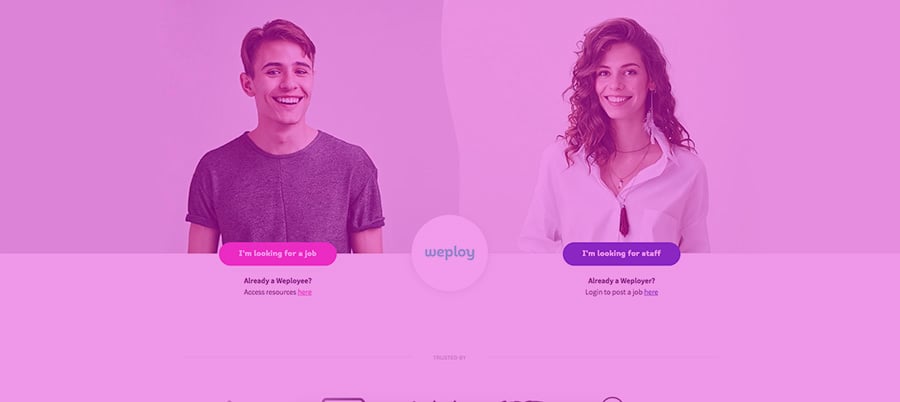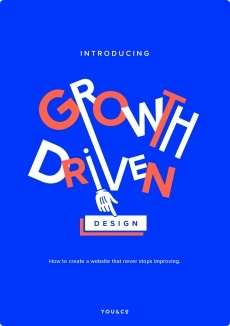Ah, the world wide web, since its inception way back in ‘89 a lot has changed - both in the world and the web. We’ve seen a massive shift in the nature of content, the platforms it’s presented on (and in) and the way in which it’s digested. In transitioning from print as the predominant medium into the digital sphere, there was bound to be some growing pains along the way.
With more and more businesses operating solely online (SaaS companies in particular) the importance of knowing your audience, and communicating to them effectively has never been more paramount. So, what’s this got to do with web formatting? We’re glad you asked.
Factors to consider
When dealing with content on the web, there are three main factors that need to be considered:
- Content complexity - is your content easily comprehended by your intended audience?
- Content length - is your content concise?
- Content design & formatting - is the layout logical and does it enhance the experience? (spoiler alert - this is the most important)
As self-confessed website & marketing nerds, we’ll be diving into the latter - why is content design in web formatting so important? As all SaaS companies operate online, there is no leeway for any miscommunication on your website and web presence - if it doesn’t make sense or speak to any of your ideal customers, what’s the point? SaaS companies should take to web formatting like a fish to water - if you had to ask why then you’re in the right place.
We have short attention spans 🙄
First things first, time. We only have a finite amount of time to grab a user’s attention. According to a Nielsen Norman group study, on average users only have time to read 28% of the words on a webpage, per visit. We need to format for user readability. If users are only reading approximately a third of your content you need to make each third count, whilst providing the information you promised them in that third. Now, this isn’t a blanket statement which you should take away with a heavy heart. If your content is compelling, relevant & concise, your readers will engage. For SaaS companies, communicating to your audience the intricacies of your product or service helps shape their buying journey.
How we read matters! 🧐
Countless studies have been done to examine human reading patterns. We’ll save you some time and summarise the findings - humans like to scan content quickly for relevant information. Big blocks of texts often are skimmed or skipped altogether because it’s easier on our brains. A great way to mitigate this is by paying close attention to your content and breaking it into easily digestible, relevant chunks of information (just like this article!). Relevant headings and effective use of font hierarchy help readers gain a broad understanding of the content before committing to consuming the content in further detail.
Is your content and website inclusive? And how easy is it to access? 😎
Moving on to the ‘governing’ bodies in the seeming ‘Wild West’ of the Web - The World Wide Web Consortium (W3C) is an international community who work together to develop web standards, and being founded by the founder of the world wide web, they definitely know their stuff. These standards of best practice ensure the web remains accessible to a wide audience.
Examples of accessibility best practices include standards for minimum contrast between text and background to ensure clear readability, as well as providing captions or alternative options to multimedia (videos, images, etc) for those unable to view the images. By ensuring your content can be easily consumed by a wide audience, as well as utilising white space, providing alternatives to images and being mindful of all the devices your content is presented on, your content and website will be reaching the maximum readership possible.
Getting bang for your buck 🤑
Dabbling in ROI, we all know that creating good content takes time and $$$$. We invest considerable time in creating content, and well crafted, beautifully formatted web content will maximise its impact and ensure it stands the test of time. By being mindful and conscious of your audience and all the external factors demanding their attention, your content should add value and serve an innate purpose. Fact: In 2016 a study of 2,300 HubSpot customers revealed that businesses that blog witness their monthly leads rise by 126% more than those who don’t.
Now being mindful of time, best practice & ROI are excellent first steps in optimising your web-formatting, but really it’s just the tip of the iceberg. Search marketing and SEO practices also contribute exponentially to optimising web-formatting as this is guided by your customers - so knowing how to get seen and answer their problems is the best way to get ROI. We could go on, and on, and on, and on about everything you need to include for best practice web design but let’s focus on the core. Your audience.
What are your users expecting to get out of their visit? 🤗
Users will expect a website that provides them with a similar experience to that they’ve experienced at another site in the same category (probably one of your competitors). If you’re feeling a bit lost on where to start, take stock and have a squiz at what your competitors are doing. What works about their site? What doesn’t? Ensure your brand integrity is kept, though take the learnings from others and exclude the things you can’t see working for you as impactful first steps - otherwise, your reader will get confused by the misalignment of their expectations and bounce on out of there. As such, it’s best to assess what is being done by websites in a similar category and use this for reference - coupled with your existing knowledge of your users to improve on your conventions.
Aside from things like page load time and SEO, one of the biggest contributors to high bounce rate is relevance - or lack thereof. Your content & website needs to do what it has prescribed, as such your heading and imagery should clearly communicate the value your reader will get from the content. TL;DR - Know your users.
The Do’s & Don’ts of the WWW 🤔
Experimenting with the plethora of data that comes with operating in the digital sphere, it’s good to find your feet and try new things to gauge your users' insight. There are some do’s and don'ts that should be taken as scripture.
The basics
- Vital information needs to stay above the fold.
- Text alignment; us Westerner’s read left to right.
- High contrast between the body and the paragraph.
- Customising or altering social media icons - adhere to the social network’s branding guidelines.
- Fonts (whether serif or sans serif, they need to be readable). Use cursive fonts sparingly.
And, how to tell if you’re doing it right👇🏻
Signs of success
- Low bounce rate - your audience is finding what they need and looking further into your offering or interests.
- Scroll depth - measuring this can help tell how ‘sticky’ your content is. Low scroll depth may suggest you need to add clearer, more digestible sections or additional imagery.
- Engagement - on comments, with CTAs, sharing.
- Comparing your web content formatting to competitors.
Remember. Design should support good content.
The importance of web formatting is paramount, especially in an age where all SaaS companies operate solely online. Being mindful and knowing your audience is key, and treating others how you would like to be treated (thanks Mum) is essential for nailing user perspective for a heightened experience.
“Beware of making design decisions aimed solely at chasing that second click - instead, focus on optimising for the long term by providing quality content that convinces people to return in the future.”
- Nielsen Norman Group
For SaaS companies, information on how your product solves problems for your audience is key. Clear, concise and organised information aids website visitors in educating themselves about your service and ideally, should inspire them enough to enquire or get in and give it a go. If you’re excited about cleaning up your web formatting, you may as well keep that momentum and build yourself a thorough and meticulous design system. Let us know how you go!









